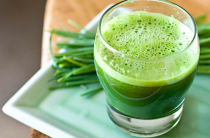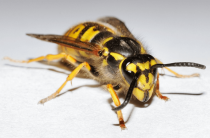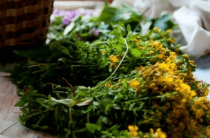Each of us has experienced various edema. Often they occur on the skin after an insect bite, with mechanical damage or chemical exposure. Puffiness is quite common after prolonged exposure to the sun or the use of certain foods. This condition has both a mild form of manifestation and a severe one. This severe form includes angioedema.
It can develop gradually, but mostly it manifests itself immediately - abruptly and unexpectedly. Therefore, it is necessary to know the symptoms and treatment of Quincke's edema.
The first signs of angioedema and its causes
This manifestation occurs in the form of swelling of the skin surface, and most importantly, subcutaneous adipose tissue. It is characterized by both the appearance of watery blisters and swelling of individual organs and parts of the body. Often there are swelling of the extremities. Very dangerous is the place of its localization on the face. If the larynx, trachea, tongue, palate and lips are damaged, a person risks getting a lack of oxygen and dying. Edema of the internal organs is seen sharply. In children, the most common place is the eyes and groin area.
Quincke's edema has two forms: allergic and pseudo-allergic. For the first characteristic feature is the presence of any type of allergy in the patient. Such people are in the first place at risk. The second type is manifested due to the physical effect on the skin.
The first sign is considered to be a rapid, rapid swelling of the lips, eyelids, hands and other parts of the body. Often the skin becomes purple, the face increases in size just before our eyes. Another symptom of Quincke's edema is called severe pain and burning of swollen organs. But the itching is not observed. At this time, the tonsils often increase in size, which makes breathing much more difficult and causes tickling.
All of these symptoms can be exacerbated by the presence of nausea, diarrhea, vomiting, and stomach pain. Vomiting is extremely dangerous for the patient, because with swelling of the digestive system and mouth, vomit can enter the lung cavity, which will lead to suffocation and death. But with a mild course of the disease, swelling disappears on its own after a couple of days.
The cause of allergic edema is the production of histamine by mast cells when an allergen enters the body. These cells begin to accumulate fluid in themselves, and then throw it away. Because of this excess fluid, swelling of the subcutaneous tissue occurs. An allergen can be:
|
|
With a pseudo-allergic reaction, the hereditary factor plays an important role. The presence of concomitant chronic diseases of the stomach, liver and kidneys is also important. You need to be very careful with diabetes.
Treatment of edema with medications
Treatment of angioedema should begin with the elimination of the allergen. You should definitely limit yourself in the use of foods such as nuts, sesame, seeds, fruits, berries and some medicines. Allergists with mild forms of swelling prescribe corticosteroids and antihistamines. The first of them include:
| Prednisolone | The drug has an inhibitory effect on the development of histamine. Prevents further development of puffiness. |
| Dexamethasone | Contains hormones from the adrenal cortex. It is used to treat a severe form of angioedema of all organs of the body and cerebral edema. With prolonged use, it can cause muscle weakness and hormonal changes. |
| Decortin | It is prescribed to get rid of acute and chronic inflammatory processes, severe forms of urticaria. Effective in the treatment of Quincke's edema of various origins. Facilitates the course of psoriasis, eczema and dermatitis. It is allowed to use in bronchial asthma. |
| Urbazon | It is used to relieve acute allergic manifestations and anaphylactic shock. Effective in renal failure and hepatic coma. |
Any hormonal drugs should be prescribed only by a doctor and in rare cases. Penetrating into the blood, they often change the hormonal background of the body, which cannot pass without a trace for the patient. As a rule, taking such drugs is no more than five days. Preference is given to those, the content of hormones in which is minimal. Accordingly, they are not suitable for the treatment of chronic angioedema. Therefore, it is better to use antihistamines:
| Rolinoz | Available in the form of tablets and drops. It is used to treat chronic forms of skin diseases. Relieves allergic urticaria and Quincke's edema. Children are allowed from one year. |
| Tigofast | It is often used to treat the chronic form of urticaria, sometimes it saves from the initial manifestations of angioedema. The drug has a different dosage of the main component of fexofenadine, so you should consult your doctor before using it. |
| Zodak | Relieves itching and burning of the skin with urticaria. Eliminates the initial manifestations of Quincke's edema. It is recommended for patients with seasonal allergies. Often prescribed for the prevention of hay fever. |
| Tsetrilev | The drug is prescribed to relieve such allergic symptoms: rhinitis, conjunctivitis, coughing fits, urticaria, dermatitis, Quincke's edema, bronchospasm. It is allowed to take a long time (up to one year), which allows you to get rid of the chronic symptoms of the disease. |
| Erius | Available in tablet form for adults and syrup for children. A strong antiallergic agent. Fights any manifestations of hay fever, food allergies and reactions to insect bites. Often prescribed for sudden Quincke's edema. |
| Fribris | The drug penetrates into the plasma and has its therapeutic effect within an hour. Helps with Quincke's edema on the face and in the respiratory tract. In the case of edema in children, the drug in the form of a syrup is used from the age of two. |
All of these drugs belong to the latest generation of antihistamines. They have high speed and long-term preservation of the effect. They do not have adverse reactions, therefore their use is allowed to everyone without exception. You just need to follow the dosage prescribed by the doctor. First-generation antihistamines, which have a sedative effect, can be used at night. They will help normalize sleep and calm the nervous system.
In the treatment of edema, diuretics must be used. Most effective:
- Furosemide. Rapid drug. Used to relieve swelling on the face. It is taken in extreme cases of exacerbation of Quincke's edema, as it removes many useful trace elements with urine.
- A drug such as Veroshpiron in much lower doses removes potassium from the body. But the effect comes later. Recommended at the initial stage of swelling in combination with antihistamines.
Treatment of angioedema involves the use of other diuretics: Arifon, Torasemide, Lasix. In acute forms of swelling, osmotic diuretics are used:
|
|
In combination with all these drugs, you can take various sorbents such as activated carbon, Polysorb, Enterosgel, Atoxil and others.
During pregnancy, it is quite difficult to choose an approved antihistamine. Among this group, the following are noted: Zyrtec, L-cet and Claritin. In emergency situations, patients are given an injection of Prednisolone or Adrenaline.
How to treat Quincke's edema with traditional medicine?
For centuries, various folk recipes have been developed and tested for the treatment of edema. In our time, having passed all the trials, one can confidently use the advice of the Narodniks. To get rid of angioedema, use the following fees:
- The patient should drink an infusion of water from the roots of the peony in a tablespoon up to five times a day for a month. This will help to remove excess fluid, calm the nerves and normalize the sleep process.
- Take valerian, chamomile, thyme, string and violet and pour this mixture with some water. Let this decoction infuse, and the water will be saturated with the beneficial properties of herbs for 15 minutes. The patient needs to drink 70 grams after meals.
- Three times a day, the patient should drink a decoction of lemon balm and mint leaves.
Well helps licorice root, succession and immortelle. These components must be steamed with boiling water and left for 20 minutes. The infusion should be taken after meals in a small amount, so that one glass is enough for the whole day. In alternative medicine, there are many natural diuretics. These include the following:
- Burdock. To do this, pour the crushed leaves into 0.5 liters of boiling water and leave overnight in a dark place. In the morning, after straining the infusion, start taking it in equal portions so that it is enough for the whole day.
- Excellent juices from celery, cucumber, watermelon, parsley, melon and tomato help. It must be taken freshly squeezed and only in the season of their ripening.
- You can use knotweed with birch leaves. A spoonful of this mixture should be poured with a glass of water and boiled for up to twenty minutes. Then they remove it from the fire and insist for the same time. It is advised to take half a cup in the morning and evening.
Treatment of edema at home
It is recommended to cook beetroot salads with the addition of celery and carrots as often as possible. Such a dish will help to quickly remove fluid from the body in the initial stages of the manifestation of agnoedema. An infusion of pharmacy nettle helps a lot. It is brewed like a simple tea and taken throughout the day. For preventive purposes, patients are advised to eat garlic. Due to its burning sensation, it provokes a person to drink large amounts of water, which leads to the frequent removal of fluid and prevents the stagnation of toxins in the kidneys. During periods of remission, drink more coffee and green tea. The most affordable and simple diuretic is dill, carrot and pumpkin. According to many reviews and tips, you can use asparagus decoctions.
It should be noted that Quincke's edema is a very serious manifestation of allergy and sometimes there is simply no time to prepare different preparations, you need to act very quickly. There are many cases of death due to the ignorance of others and the patient himself, how to act in this situation. And the most necessary is to call an ambulance.
First aid
Of course, the first item on this list will be the call of the doctors. Explain the complexity of the situation over the phone and they will be able to give you some advice on what to do before they arrive. Then follow these rules:
- Eliminate patient contact with the allergen;
- If you are indoors, open all windows to let in fresh air;
- Loosen the patient's clothes, unbutton his shirt and belt;
- Apply a cold compress to the affected area. If the swelling is caused by an insect bite or injection, just above this place, drag the part of the body with a tight bandage and also apply ice;
- Make the patient drink a large amount of liquid, in which dilute several tablets of coal;
- Never induce vomiting in a patient. Vomit can fill the lung cavity, which will lead to respiratory arrest;
- give the patient an antihistamine;
- Try to talk more with the patient so that he does not start to panic.
If cases of Quincke's edema in a patient are not uncommon, he should always have an injection of adrenaline on hand, which will relieve mild and severe edema.
Some Helpful Tips
After getting acquainted with such a question as the symptoms and treatment of Quincke's edema, I would like to give some more useful tips that will help save you. It is very important not to experience a deficiency of vitamin C, while the B vitamins are direct provocateurs of edema. So saturate your diet with sauerkraut, lemon, cauliflower and broccoli.
If you have a predisposition to agnoedema, try to follow a hypoallergenic diet at all times. Eliminate the following foods from your diet that can cause complications:
|
|
|
Be careful with tomatoes, carrots, apricots, peaches, currants, potatoes. Before cooking them, it is better to check the reaction of the body by using small doses. Doctors recommend during periods of exacerbation to resort to water fasting. In combination with sorbents, this will contribute to the outflow of liquid. Such a diet is followed for no more than five days. You need to drink two liters of purified water daily. Then you can gradually introduce light foods, such as vegetable broths, second-rate bread (not fresh). It is recommended to use cereals cooked in water without oil. Avoid salt for this time. This menu must be observed for five days. When the swelling subsides, do not rush to return everything to its previous course. Just diversify your meal with the following dishes:
- biscuit cookies;
- Dietary meat: turkey, rabbit, beef;
- Light meat broth;
- Egg white omelette, soft-boiled eggs;
- Kefir, milk, sour cream, cottage cheese;
- Not strong tea.
Eat only freshly cooked foods, steamed, in the oven or boiled. Start including B vitamins in your diet. For a change, you can arrange cottage cheese or rice days for yourself.










